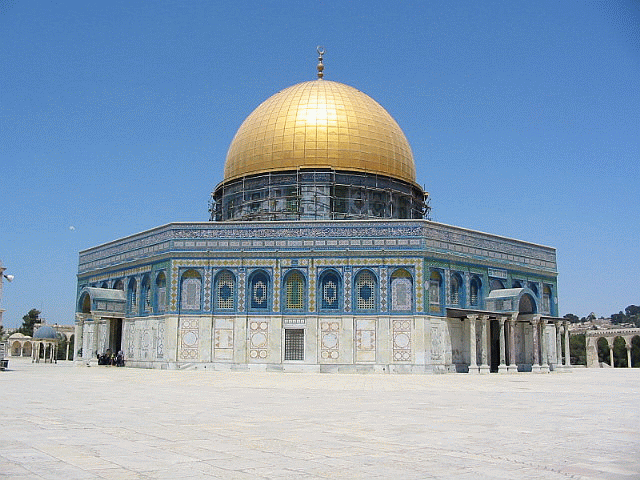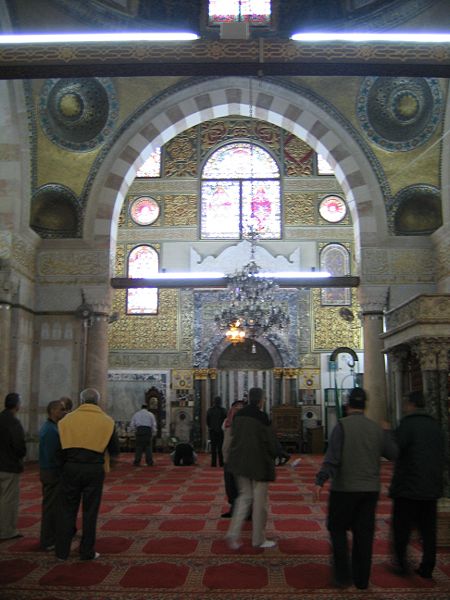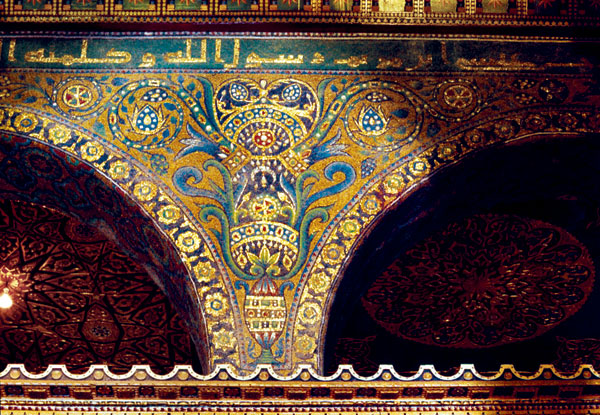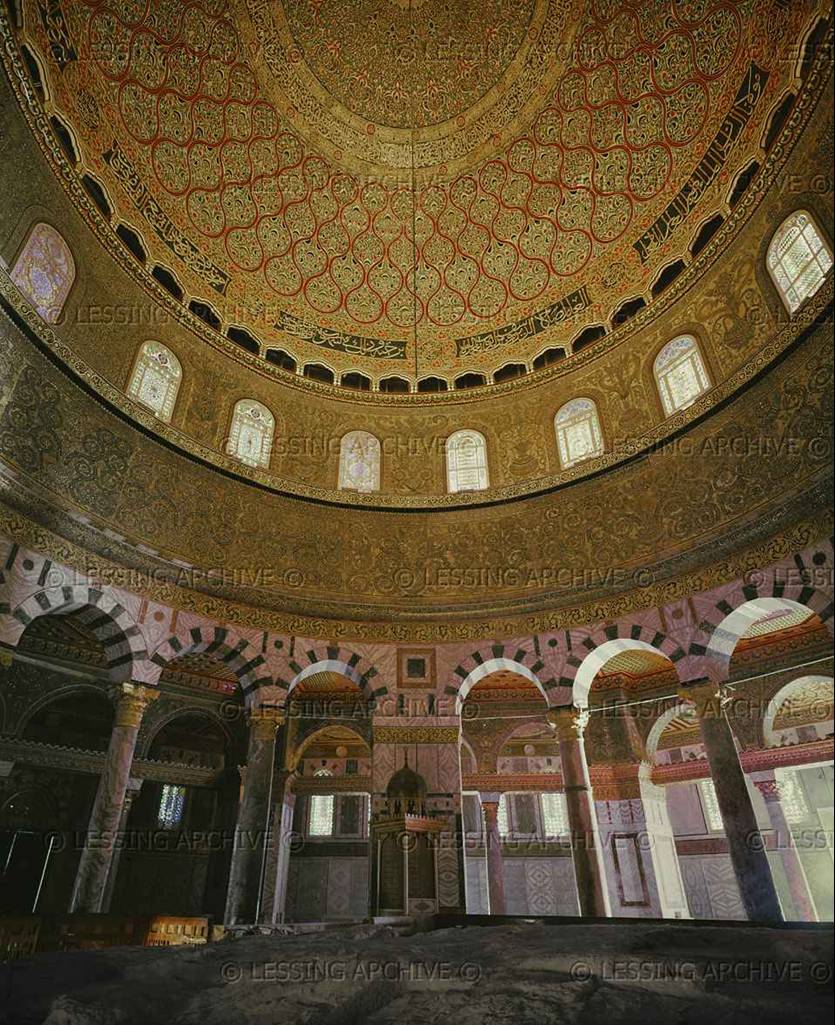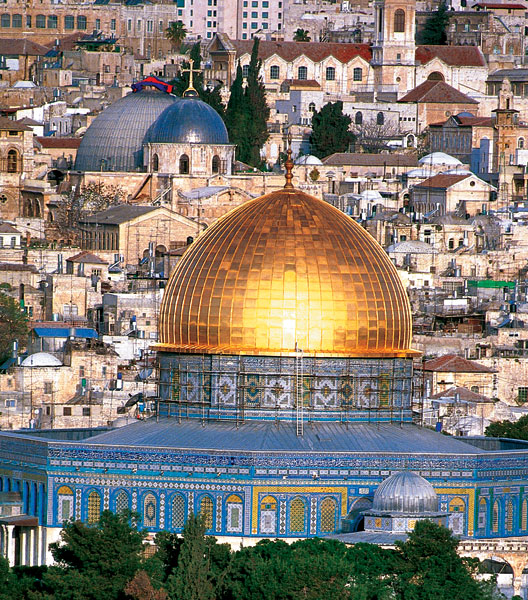Epigraphy from the Inner Octagonal Arcade of the Dome of the Rock, the oldest known Islamic inscription on the oldest Islamic building; it is located on the Temple Mount, Jerusalem.
“…O People of the Book!
Don’t be excessive in the name of your faith!
Do not say things about God but the truth!
The Messiah Jesus, son of Mary, is indeed a messenger of God-
The Almighty extended a word to Mary,
and a spirit too.
So believe in God and all the messengers,
and stop talking about a Trinity.
Cease in your own best interests!
Verily God is the God of unity.
Lord Almighty! That God would beget a child?
Either in the Heavens or on the Earth?…”
Nuseibeh, Said, and Oleg Grabar, The Dome of the Rock, Rizzoli International Publications, Inc., New York, 1996.
Interior of Al-Aksa Mosque
According to Josias Leslie Porter, in his book Jerusalem, Bethany, and Bethlehem, 1887, p. 48-
The origin of the mosque, as given by Muslem authorities, is interesting. It is as follows. After taking the city, the Khalif Omar asked where the Jewish Temple stood. The Patriarch took him to this rock, then covered with ruins. Omar, with his own hands, helped to remove the rubbish, and gave orders for the erection of the mosque. It is further said that it was rebuilt in a style of greater splendour by Abd el-Melek, who covered it with plates of gold. During the temporary rule of the Crusaders it was converted into a church, and they called it “The Temple of the Lord.”
Dome of the Rock Inscription
When Jerusalem was captured by the Crusaders in 1099, they converted the Dome of the Rock into a church, calling it the Templum Domini. They added a cross on the dome and iron railings for the protection of the Rock. The al-Aksa Mosque became the residence of the first Latin kings of Jerusalem (Palatium Salomonis), with the addition of a front portico. Subsequently it passed to the Templar Knights who constructed their monastery to the west of the Mosque (today the Islamic Museum).
Interior of the Dome
See also-
- Dome of the Rock Renovations, 1099-1187
- A Brief Guide to Al Haram Al Sharif
- A Brief Guide to Al Haram Al Sharif- Summary
- Moslem Jerusalem 638-1099, Teddy Kollek and Moshe Pearlman, Jerusalem- Sacred City of Mankind, Steimatzky Ltd., Jerusalem, 1991.
- Al-Aqsa Mosque. Photograph by Ardon Bar-Hama.
- Al-Aqsa Mosque Panorama
- The Al-Aqsa Mosque 1
- The Al-Aqsa Mosque 2
- Carl Werner’s Interior of the Dome of the Rock, 1863
- Carl Werner’s Holy Rock, 1864
- Kubbat-As-Sakhra from S.E. Corner of Platform
- Kubbat-As-Sakhra from N.W. Corner of Platform
- North Side of Platform from the Minaret over the Pool of Bethesda
- South Entrance to Kubbat-As-Sakhra
- West Entrance to Kubbat-As-Sakhra
- Details of N.E. Side of Kubbat-As-Sakhra
- Interior of Kubbat-As-Sakhra
- Screen and Pulpit on the South Entrance to the Platform
- Masjed-Al-Aksa from the S.E. Corner of the Platform
- North Front of the Masjed-Al-Aksa
- Eastern View of the Platform from the Golden Gate
- Life in the Holy Land- Dome of the Rock, History and Traditions
- Pictures from the Holyland

